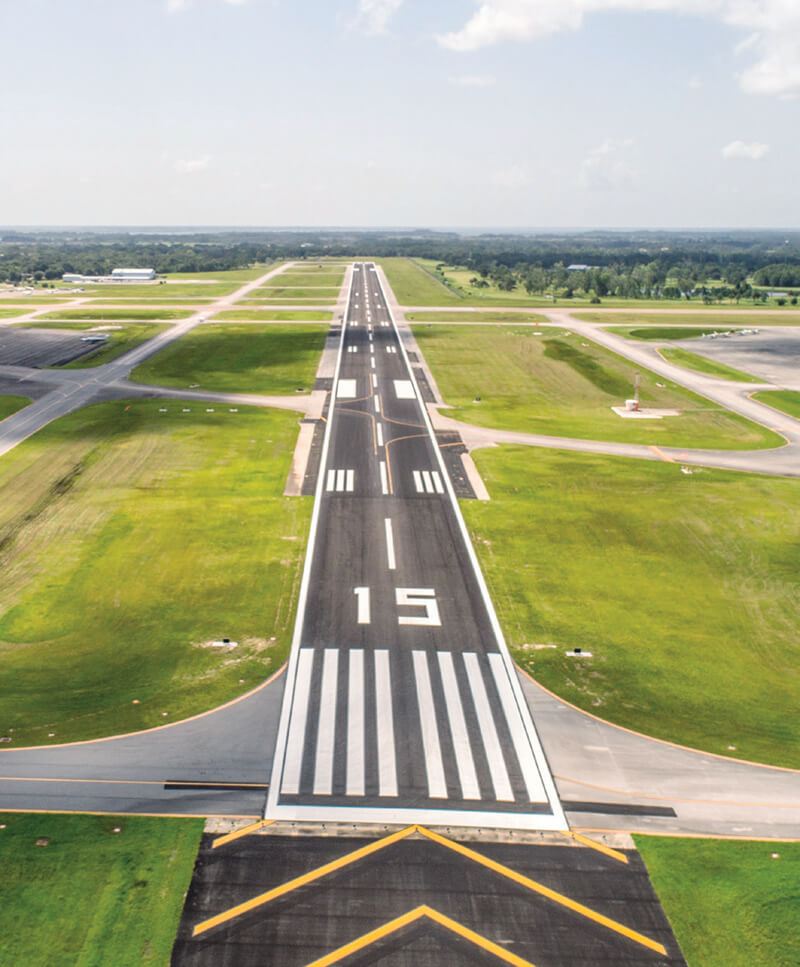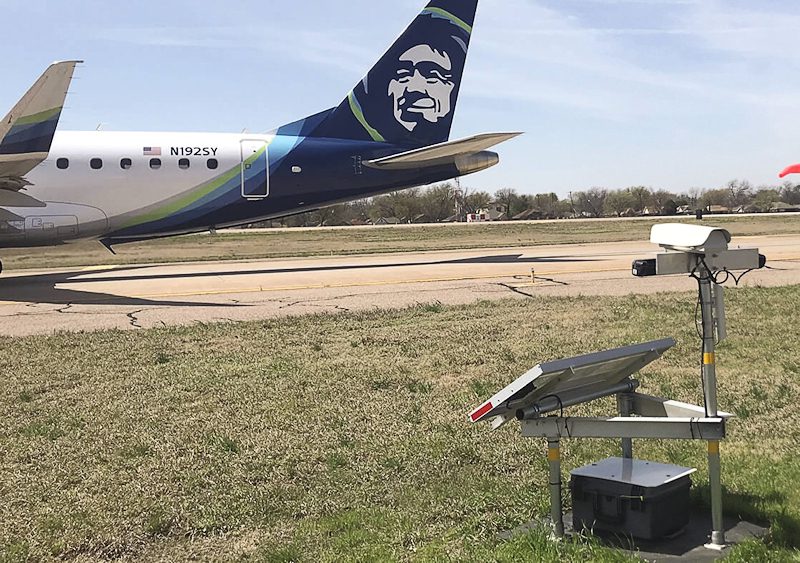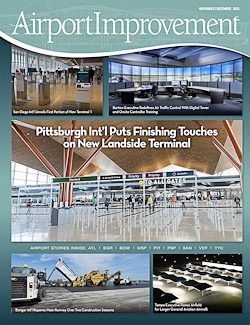The aviation industry has long relied on Automatic Dependent Surveillance-Broadcast (ADS-B) data to provide real-time tracking and monitoring of aircraft for collision avoidance, weather awareness and routine air traffic management. However, the technology can also be used to assess and bill aircraft owners for landing and other airfield fees, which has caused an outcry of objections from some general aviation operators unaccustomed to receiving invoices for using public airports.
The resulting uproar has prompted pilot advocacy groups to lobby for regulatory changes. Montana is leading that movement as the first U.S. state to pass a law that limits the use of ADS-B data to assess user fees on certain aircraft.
How Did We Get Here?
ADS-B has been part of FAA’s NextGen modernization plans since the early 1990s. Integration began in earnest when it awarded ITT Corporation a multimillion-dollar contract in 2007 to develop and implement the ADS-B system, which ultimately provided more accurate tracking than existing radar.
In 2010, a rule for implementing ADS-B in the National Airspace System (NAS) was finalized despite some objections to broadcasting tail numbers beyond what was necessary for Air Traffic Control. FAA responded within the rule by stating “. . . there is no right to privacy when operating in the NAS.” Commenters also expressed concern over FAA using the collected data to enforce actions or levy fees. FAA’s response was that user fees were not a part of this rule and would have to be addressed in a different one. The Jan. 1, 2020, deadline for equipping aircraft with Mode C transponders that include ADS-B Out (to send data about aircraft position) was not popular with many aircraft owners because they had to spend several thousand dollars to comply with the new rule.
| facts&figures
Project: Using ADS-B Data to Collect Airfield Fees How it Works: ADS-B transponders in aircraft send signals that indicate their real-time location; commercial systems available from multiple vendors combine that data with other technologies to identify aircraft & bill owners for airport user fees Sample Locations: Kissimmee Gateway Airport, in FL; Hanscom Field, in MA; Texarkana Regional Airport, in AR System Used: PLANEPASS, from Vector Airport Systems Key Benefits: Improved ability to assess & collect fees for landing, parking, etc.; airports with limited staff resources can recoup uncollected revenue; enhanced airfield safety & security from identifying transient aircraft |
Fast forward 10 years since the official implementation and some things have changed. “No right to privacy in the NAS” was amended in a 2019 rule that removed transmission requirements for federal, state and local government entities involved in sensitive operations for matters of national defense, homeland security, intelligence and law enforcement. This year, FAA also enabled a privacy program through the FAA Civil Aviation Registry Electronic Services online portal that allows private aircraft owners to keep some registration information (such as their name and address) private. While not cited as the reason for wanting identifying information to be redacted, this added layer of anonymity allowed aircraft owners to avoid being billed for aircraft landing fees.
Infrastructure Costs
Chris Oswald, senior vice president of Safety and Regulatory Affairs for Airports Council International–North America (ACI-NA) emphasizes that landing fees and other charges for using airfields are long-standing, well-established, appropriate, legal and fair. He explains that airports have always relied on aeronautical revenue to maintain, rehabilitate and improve runways, taxiways, aprons and other critical airfield infrastructure.
“In the U.S. and worldwide, these fees are almost immediately put back into the airport to provide infrastructure necessary for safe operations, which is the first priority of airport operators,” Oswald says. “There is no free infrastructure.”
Airport Funding 101–Enterprise and Otherwise
Kissimmee Gateway Airport (ISM), a city-owned airfield in Central Florida with about 135,000 annual operations, came under fire earlier this year from the general aviation community after announcing it would begin charging transient aircraft landing fees—a first since opening in 1940. Based operators, which account for about half of ISM’s traffic, are not charged.
Director of Aviation Shaun Germolus, A.A.E, emphasizes that proceeds from the landing fee ($3 per 1,000 lbs. of landing weight) will be used as cost recovery efforts to shore up the airport’s general reserves. Based on 2023 traffic, the new user fee could generate between $400,000 and $500,000 per year.
 This is an important source of revenue because ISM operates as an enterprise fund and does not receive money from the city of Kissimmee or Osceola County. The airport’s annual budget is approximately $2 million, including expenses for personnel, equipment, maintenance, utilities and insurance. The operating budget is also used for local matches required by federal and state grants for capital improvements.
This is an important source of revenue because ISM operates as an enterprise fund and does not receive money from the city of Kissimmee or Osceola County. The airport’s annual budget is approximately $2 million, including expenses for personnel, equipment, maintenance, utilities and insurance. The operating budget is also used for local matches required by federal and state grants for capital improvements.
One challenge has been a significant lack of understanding about the nature of ISM’s financial operations. In particular, Germolus sees the need to educate customers about the different roles of aviation taxes, government grants and user fees. “One group [taxes and grants] provides funds for a one-time expenditure, such as constructing a runway. The other [user fees] keeps that same runway maintained and available for safe, secure and efficient use for the next 20 years,” he explains.

Without city or county funding, Kissimmee Gateway relies on user fees to pay for operating expenses and infrastructure improvements.
Paul Mehrlich, A.A.E., ACE, executive director of Aviation at Texarkana Regional Airport (TXK) in Arkansas, acknowledges the predicament Germolus is in. As a non-hub airport with about 17,000 annual operations, TXK receives entitlement payments of $1 million per year. Meanwhile, general aviation airports, like ISM, receive about $150,000 per year—and that is just for capital projects, not standard operating and maintenance costs, Mehrlich notes.
At TXK, the fixed base operator collects ramp and fuel fees. “I don’t get any of that,” Mehrlich points out. “Who then pays? The local community through the general fund.”
Better Tracking Methods
It’s one thing to charge airport fees and quite another to collect them. The exercise of tracking aircraft, finding the owners and sending them invoices can be difficult for general aviation airports with small staffs. Sometimes, it is too time-consuming for the relatively small dollar amounts involved.

Mehrlich’s previous experience assessing fees at a general aviation airport in California involved daily searches on FlightAware, one by one, based on the tail numbers of aircraft that landed the night before. Information on some aircraft would be blocked, and some would be identified only by call signs. Checking the FAA tail number database was also hit or miss because some aircraft in question had been sold. In other cases, ownership was cloaked under an LLC, or the aircraft was in the process of being purchased, so a bank owned it. “All this time is spent on one aircraft, and you may have a landing fee that’s $2 per 1,000 pounds…so you send them a bill for like $30,” he recalls.
These days, TXK uses PLANEPASS from Vector Airport Systems, which leverages ADS-B data and other technologies to automatically capture aircraft information, assess landing fees and collect the associated revenue. The airport partnered with Vector in July 2020, a few months after Mehrlich accepted his position there. However, he was familiar with PLANEPASS having used it at Dallas Love Field (DAL).
When TXK implemented the system, it was set up for non-airline traffic only because a payment method was already in place for commercial aircraft. Mehrlich also limited its use to aircraft over 8,000 lbs. because he did not want to have any impact on the general aviation community, including flight schools and pilots practicing touch-and-go landings. “Just because we have Vector doesn’t mean you will get an invoice,” says Mehrlich. “Small GA guys never get charged a landing fee.”
The system is still relatively new at ISM, which doesn’t have any commercial traffic. After entering an agreement with Vector in December 2024, the Florida airport announced the impending introduction of landing fees, and started collecting them on Feb. 1, 2025. “The monitoring, invoicing and coordination has gone very well,” Germolus reports, while also acknowledging immediate blowback from aircraft owners when the assessments began. Some pilots argued that ADS-B technology was supposed to be used for safety and nothing else; others objected to a third party such as Vector profiting as a collection agency. Germolus countered by informing aircraft operators that the technology provides the airport with many benefits, including accurate aircraft counts, alerts about overdue aircraft, law enforcement assistance and a method for addressing noise complaints. Moreover, he explained that using PLANEPASS is the most economical and efficient way for ISM to collect fees. Other methods that rely on cameras, equipment and additional personnel would be more expensive, and those costs would be passed on to airport users.
Nothing New Under the Sun
Despite the current upheaval about airports collecting fees for landing, parking, etc., technology to capture aircraft tail numbers has been available for more than 20 years. The first installation of PLANEPASS occurred at Hanscom Field (BOS) in 2005—a relationship that continues to this day. Worldwide, nearly 100 commercial and general aviation airports currently use the Vector system to automatically perform services that would otherwise take staff hours or days to accomplish.
 Pete Coleton, president and chief executive officer of Vector, highlights the inherent efficiency of managing billing for that many airports, because a single aircraft is likely to incur landing fees at multiple locations in a given month. “If they’re a big enough flight department, Vector might be contacting them on behalf of 20 airports,” Coleton remarks. “So if you can imagine, one billing system, one payment system where it can have one payment for 20 airports — there is a significant efficiency created by that. Larger flight departments love us for that efficiency.”
Pete Coleton, president and chief executive officer of Vector, highlights the inherent efficiency of managing billing for that many airports, because a single aircraft is likely to incur landing fees at multiple locations in a given month. “If they’re a big enough flight department, Vector might be contacting them on behalf of 20 airports,” Coleton remarks. “So if you can imagine, one billing system, one payment system where it can have one payment for 20 airports — there is a significant efficiency created by that. Larger flight departments love us for that efficiency.”
Vortex of Vitriol
Although multiple companies offer systems that use ADS-B data to record tail numbers and help airports collect fees, pilot organizations and online groups frustrated about the practice seem to largely direct their anger toward Vector and even Coleton personally.
“Vector is not the bad guy,” Mehrlich asserts. “Vector does not set the fees or weights. If the fee is too high, that’s on the airport. I can also call them to waive a fee.”
Mehrlich posits that the established practice of paying airfield fees may not have trickled down from commercial and corporate sectors to general aviation operators that use Part 91 airports. He says he realizes that landing fees may be unfamiliar to some small aircraft owners, but also understands the irritation of others who have spent the time and money to install ADS-B equipment as required. “That is frustrating for an airport, because we do need to collect fees to be able to pave the runway,” says Mehrlich. “The NetJets and FlexJets, who are really good about paying [for airfield use], are now taking the brunt of the landing fees that these other guys are sort of getting away with.”
Skirting the System
Amid the heated disagreement about using technology to collect airfield fees, some pilots have hinted they might disable their ADS-B Out when approaching airports due to privacy concerns.
But, does privacy trump policy?
“It is illegal to turn it off because it’s a safety mechanism,” Mehrlich advises. “And I would warn them that they don’t want to do something that could potentially cause a larger problem.”
“It is not ethical to skirt the system,” adds Coleton. “We use a variety of technologies – Flight Aware, AirNav and other flight tracking data. There are cameras and other proprietary technologies. We don’t want to get it wrong for pilots, and we don’t want airports to miss out on collecting legitimate fees.”
Germolus is concerned about the current legislative push to eliminate use of ADS-B data for fee collection based on the premise that aircraft ownership should be private. “We need to know who is coming to our airport,” he reasons. “We need to be able to do our jobs.”
Additionally, he says airports are not misusing the technology by using it to levy legal fees.
Mehrlich is against taking away what he describes as an efficient tool for airports. He says Vector processed just over $45,000 in fees for TXK last year, and hiring staff to do so would cost more than using the automated system.

Texarkana Regional chooses not to collect landing fees from flight training aircraft and other small general aviation operators.
Final Approach
Airport directors like Mehrlich and Germolus know that general aviation airports have limited revenue sources, and the cost of managing multimillion-dollar airfields is only rising. For them, using ADS-B data to collect airfield fees is an effective way to help cover operating and capital improvement expenses.
“These new funds significantly assist an airport’s ability to plan and complete future projects, address deferred maintenance and improve areas to attract additional revenue generation,” says Germolus.
Coleton would like to see efforts to educate the public and pilot communities about how general aviation airports are funded as well as address misconceptions regarding the legality of landing fees and the use of ADS-B for billing of landing fees. “I have never met a greedy airport manager. I never met an overpaid airport manager. I have never met a poorly intentioned pilot who wants to see airports suffer and crumble and close. I would love to see the aviation community come together as a healthy ecosystem where the benefit of the doubt is given by both the pilots and airports,” says Coleton.
ACI-NA’s Oswald echoes that sentiment. “We support our member’s concerns about their ability to appropriately collect legal fees at their facilities,” he remarks. “I am really hopeful that we will be able to work with our other aviation partners to find some ways to address concerns that the GA and business aviation community have without undermining the airport’s ability to collect fees. They need to be able to collect.”
The four letters ADS-B have certainly frustrated some general aviation aircraft owners, but the technology is also helping airports maintain infrastructure and facilitate safe operations for all aviators. Despite that connection, the debate over “free” vs. “fee” is bound to continue.



